Home > Company > Tire Safety > Choosing Tires > Determining Tire Size
Once you have determined it’s time to buy tires, you’ll need to know what size tires are correct for your vehicle. Depending on what you drive, you may be interested in how to find the right tire for your…
This information is usually inside your car’s doorjamb, in your owner’s manual. To ensure your current tire or a replacement tire you may be looking at matches your vehicle’s requirements, it will be good for you to understand how tire sizing works. You may have never paid attention to the string of numbers and letters on every tire, but it’s a gold mine of information.
If you’re unsure of how to read tire measurements from your tire walls, the information and graphics below will tell you how to read tire size, understand and interpret it. If you decide you want to substitute a new size or tire type, consult an authorized tire retailer who can expertly advise you, because many optional tire sizes may have different load capacities and could require wheels of a different rim width or diameter and different inflation pressure.
Not sure you need new tires? Our Tire Replacement Guidance article will help you determine whether it’s time to retire your tires.
Most passenger cars, SUVs and light pickups (1/2 ton and smaller) will come with tires that are either P-Metric or Euro-Metric. For P-Metric tires, you’ll see the letter “P” before the number sequence begins: P225/70R16 97H. P-metric is a designation standardized by the Tire and Rim Association for a “passenger car” tire type. For Euro-Metric there will be no preceding letter before the number sequence begins: 225/70R16 98H. Euro-Metric is a designation standardized by the European Tyre and Rim Technical Organization for a “passenger car” tire type.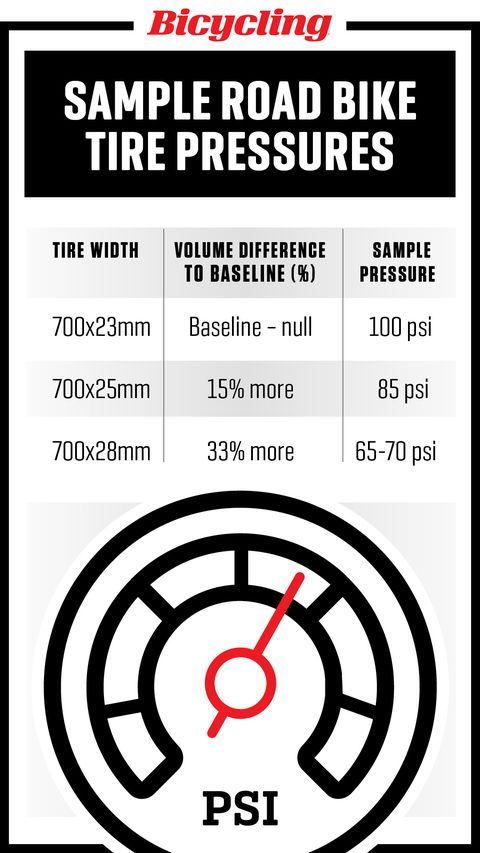 Both P-Metric and Euro-Metric size tires are designed to primarily be used on passenger vehicles, which can include cars, minivans, SUVs, and other light duty pickup trucks.
Both P-Metric and Euro-Metric size tires are designed to primarily be used on passenger vehicles, which can include cars, minivans, SUVs, and other light duty pickup trucks.
If your vehicle is an SUV, Pickup truck or van, you might see a different type of size designation on your placard that is specific for heavy duty light trucks and vans, especially common on ¾ ton and larger pickup trucks and vans. There are two common size types in this category, LT-Metric and Euro-Metric Commercial (aka C-type). Both size types are metric and so use the same structure as P-Metric and Euro-Metric but have some different characters in the size that differentiate them from their passenger car cousins. LT-Metric tires will have the letters “LT” before the size number sequence: LT245/75R17 119/116R Load Range E. Notice that there are two load index numbers and a Load Range, see the section on Load Index for more info. LT-Metric is a designation standardized by the Tire and Rim Association for a “light truck” type tire. Euro-Metric Commercial or C-Type tires will look very similar to a passenger Euro-Metric size except that there will be a “C” right after the rim size: 23/65R16C 121/119R. Notice that the C-type tires also have two load index numbers. Euro-Metric Commercial, or C-Type is a designation standardized by the European Tyre and Rim Technical Organization for a light truck type tire. Light truck tires are designed to be used on vehicles capable of carrying heavy cargo and are usually only specified by a vehicle manufacturer on vehicles exceeding a certain load capacity.
Euro-Metric Commercial or C-Type tires will look very similar to a passenger Euro-Metric size except that there will be a “C” right after the rim size: 23/65R16C 121/119R. Notice that the C-type tires also have two load index numbers. Euro-Metric Commercial, or C-Type is a designation standardized by the European Tyre and Rim Technical Organization for a light truck type tire. Light truck tires are designed to be used on vehicles capable of carrying heavy cargo and are usually only specified by a vehicle manufacturer on vehicles exceeding a certain load capacity.
Other types of tires that fall into the Metric sizing type are Temporary Spares, they start with “T”. If you see a size that starts with “ST,” that means “special trailer” and is only for use on a trailer.
Regardless of whether you are looking at a P-Metric, Euro-Metric, LT-Metric, Euro-Metric Commercial, T or ST tire the numbers in the size mean the same thing.
The first number to appear in your tire size information is the width, in millimeters, of the correct tires for your vehicle: P225/70R16 91S.
Tire width always refers to the measurement from one sidewall to another. Thus, a tire with the measurement “P225” is for a passenger vehicle and has a nominal width of 225 millimeters.
After the slash mark, the next number you see is for the tire’s aspect ratio, which essentially tells you how tall your tire’s profile is: P225/70R16 91S. Aspect ratios are delivered in percentages. Tire makers calculate the aspect ratio by dividing a tire’s height off the rim by its width. If a tire has an aspect ratio of 70, it means the tire’s height is 70% of its width.
Lower aspect ratio tires, such as a 60 series, generally offer vehicle handling performance advantages over higher aspect ratio tires, such as a 75 series, but a typical trade off can be ride harshness.
After the aspect ratio comes a letter that indicates the type of internal construction maintaining your tire’s stability: P225/70R16 91S.
There are two types of construction that you may see on the sidewall of a tire:
Radial tires are the most common tires on the road in the United States today; thus “R” will usually be shown in the tire size designation. Radial construction means the tire’s internal ply cords are oriented in a radial direction, from one bead over to the other, essentially perpendicular to the direction of rotation. You may also occasionally see RF indicating a run flat tire or ZR indicating a tire that is a speed rating higher than V.
The next number is the diameter code, in inches, of the rim onto which the tire can be mounted. For example, a tire with the P225/70R16 91S would fit a rim with a 16-inch diameter.
Load index can be a confusing subject because there are so many different caveats, but we will try to explain everything here.
The next figure after the rim size in the sequence is your tire’s load index, which tells us how much weight, in pounds, the tire can support when fully inflated: P225/70R16 91S
We call it the load “index” because the number doesn’t tell us the precise number of pounds the tire can carry, at least not by itself. However, the number does correspond to a specific load capacity listed in an index. Beginning with 1 and ending with 150, numbers in the load index represent carrying capacities of 99 to 7385 lbs.
There are two types of load types for passenger tires though, Standard Load and Extra Load. If a tire is Standard Load there will be no markings indicating it but if it is Extra Load the letters XL will appear after the size and load index.
Standard Load Euro-Metric: 215/55R17 94V
Extra Load Euro-Metric: 215/55R17 98V XL
Passenger car tires like P-Metric and Euro-Metric will only have one load index number where LT-Metric and Euro-Metric Commercial (C-Type) will have two numbers separated by a slash. The first number is the load index if the tire is used in a single application, the second number is the load index if the tire is used in a dual application. Passenger type tires cannot be used in a dual application. Light truck tires will also have a Load Range that is indicated by a letter, such as Load Range E. Load Range is an older term that is still commonly used in the industry so you may hear your tire dealer reference it but the load index numbers are the best way to ensure you have the proper tire.
The first number is the load index if the tire is used in a single application, the second number is the load index if the tire is used in a dual application. Passenger type tires cannot be used in a dual application. Light truck tires will also have a Load Range that is indicated by a letter, such as Load Range E. Load Range is an older term that is still commonly used in the industry so you may hear your tire dealer reference it but the load index numbers are the best way to ensure you have the proper tire.
One important but often misunderstood facet about load index is that the load index numbers between standards organizations (P-Metric vs Euro-Metric) are not necessarily on the same scale. Meaning that two tires in the two different systems that have the same load index number could have different maximum load capacities. This is why it’s important to not only look at the load index number but also verify the actual load capacity.
The final figure in a tire size sequence is the speed rating, which is indicated by a letter: P225/70R16 91S.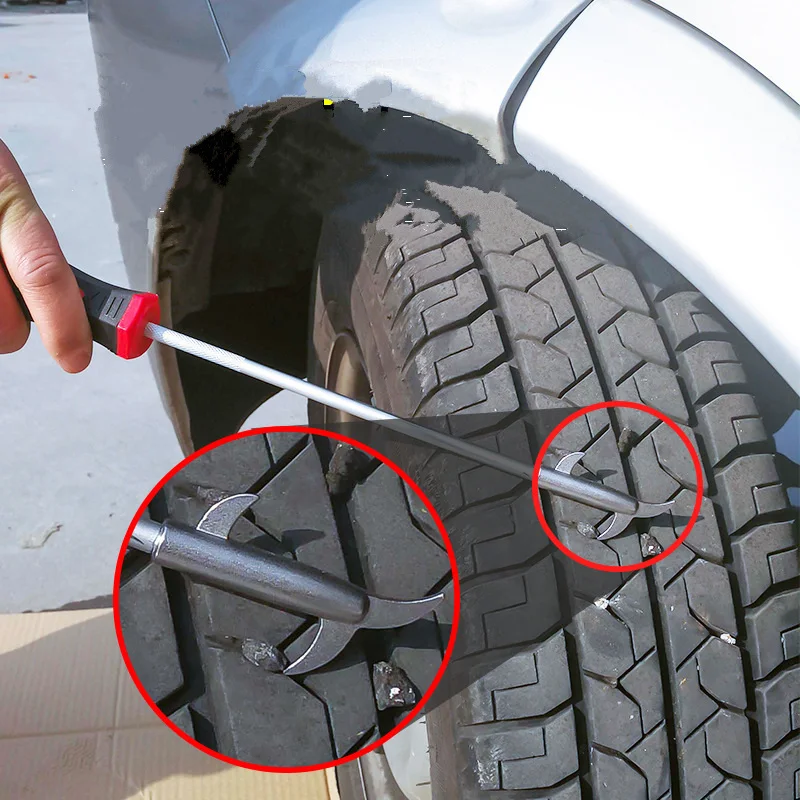 Just as your load index number corresponds to a specific load, your speed rating letter corresponds to a particular speed capability based on a standardized laboratory test.
Just as your load index number corresponds to a specific load, your speed rating letter corresponds to a particular speed capability based on a standardized laboratory test.
For example, a tire with speed rating “S” is rated for up to 112 mph, while a tire rated “R” is up to 106 mph. Remember that this isn’t a recommended cruising speed. Of course, you should always follow legal speed limits on roadways.
Replacement tires must have the same or higher speed rating as the vehicle’s Original Equipment to maintain vehicle speed capability. If a vehicle has tires with different speed ratings, it is the speed rating of the “slowest” tire that dictates the vehicle top speed.
There is one last sizing type that you should know about, especially if you are in the market for off road tires for a light truck or SUV. It’s called a Flotation size and the numbers in this sizing format are very different from the Metric formats.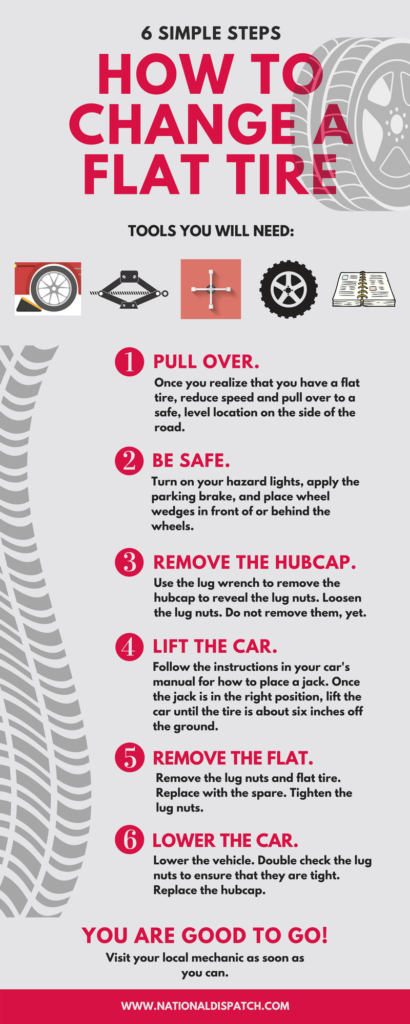 Flotation sized tires are similar to LT-Metric tires in application except for a few important points. Number one, they cannot be used in dual applications and number two, an equivalent size tire may have different load capacity than its LT-Metric counterpart.
Flotation sized tires are similar to LT-Metric tires in application except for a few important points. Number one, they cannot be used in dual applications and number two, an equivalent size tire may have different load capacity than its LT-Metric counterpart.
The first number in the Flotation tire size is the overall diameter in inches. Pretty straight forward.
The second number is the section width (sidewall to sidewall) measurement in inches. Again, fairly simple.
After the section width comes a letter that indicates the type of internal construction: 33X12.50R17LT 120Q.
This is the same as is found in the metric sizing systems.
There are two types of construction that you may see on the sidewall of a tire:
Radial tires are the most common tires on the road in the United States today; thus “R” will usually be shown in the tire size designation.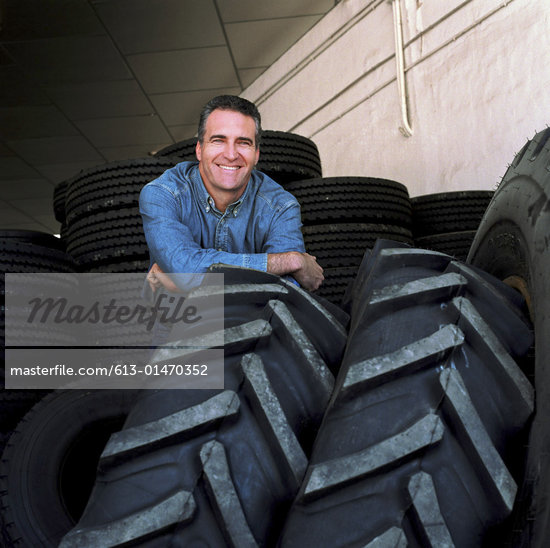 Radial construction means the tire’s internal ply cords are oriented in a radial direction, from one bead over to the other, essentially perpendicular to the direction of rotation.
Radial construction means the tire’s internal ply cords are oriented in a radial direction, from one bead over to the other, essentially perpendicular to the direction of rotation.
The next number is the diameter code, in inches, of the rim onto which the tire can be mounted. For example, a tire with the 33X12.50R17LT 120Q would fit a rim with a 17-inch diameter.
The letters LT will be after the Rim Diameter indicating that this tire type is intended for Light Truck vehicles similar to the LT-Metric and Euro-Metric Commercial (C-Type) tires.
Load Index and Speed Rating have the same meaning and format as the tires using the metric sizing system. Note that since flotation tires cannot be used in a dual application there will be only one load index number instead of two.
Another group of stamping on certain types of tires is the Uniform Tire Quality Grading or UTQG. This grading and stamping is required for passenger car tires (i.e. P-metric and Euro-metric) in the all season and summer categories. Dedicated winter tires, Light Truck (LT-Metric, Euro-Metric Commercial, Flotation) and Motorcycle tires are excluded from this requirement.
Quality grading is designed to make the tire purchase decision easier for you. Ideally, the system is intended to provide simple, comparative data so you can make an intelligent buying decision. However, the ratings are based upon test results achieved under special conditions. This means it’s possible to misinterpret the comparative data as it relates to your individual driving habits, conditions, etc. You should still rely on your service or tire professional for assistance.
Quality grading designates the comparative performance levels of a tire based on government-specified tests but commissioned by the individual tire manufacturers.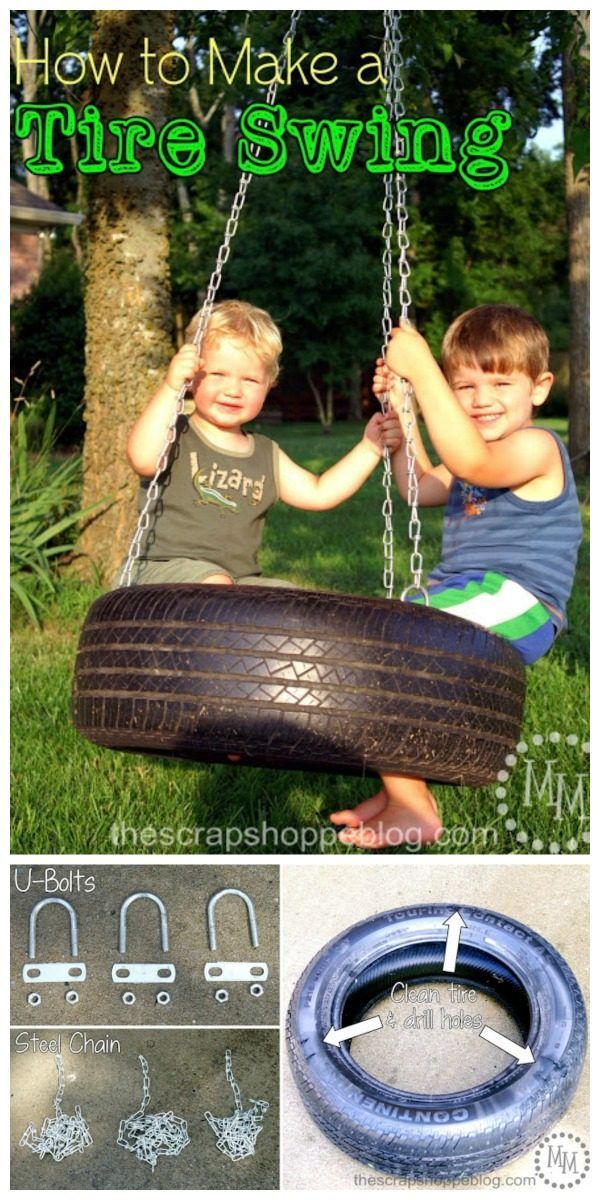 All tire manufacturers are required to grade regular and all-season passenger tires in three categories:
All tire manufacturers are required to grade regular and all-season passenger tires in three categories:
UTQG
Treadwear
The treadwear grade is a comparative rating based on the wear rate of the tire when tested under controlled conditions on a specified government test course for 6,000 miles (9,600 km). For example, a tire graded 150 would wear one and a half times as well on the government course as a tire graded 100. However actual tire performance depends on driving habits, road characteristics, service practices, and other factors that can influence the outcome.
Traction Grades AA, A, B and C
The traction grades from highest to lowest are AA (the highest), A, B and C. They represent how well tires stop on wet pavement as measured under controlled conditions on specified government test surfaces of asphalt and concrete. C-rated tires will have the lowest traction performance.
WARNING: THE TRACTION GRADE ASSIGNED IS BASED ON A WET BRAKING (STRAIGHT AHEAD) TRACTION TEST AND DOES NOT INCLUDE CORNERING (TURNING) TRACTION.
Temperature Grades A, B and C
The temperature grades A, B, and C represent the tire's resistance to the generation of heat and its ability to dissipate heat when tested under controlled conditions on a specified indoor laboratory test wheel. Sustained high temperature can cause the tire’s material to degenerate and reduce tire life, and excessive temperature can lead to sudden tire failure. The grade C corresponds to a performance level all passenger car tires must meet under the Federal Motor Vehicle Safety Standard No. 109. Grades A and B represent higher levels of performance on the laboratory test wheel than the minimum required by law.
WARNING: THE TEMPERATURE GRADE IS ESTABLISHED FOR A TIRE THAT IS PROPERLY INFLATED AND NOT OVERLOADED. EXCESSIVE SPEED, UNDER INFLATION, OR EXCESSIVE LOADING, EITHER SEPARATELY OR IN COMBINATION, CAN CAUSE HEAT BUILDUP AND POSSIBLE TIRE FAILURE.
DOT Quality Grades
All passenger car tires must conform to other federal requirements in addition to these grades.
Learn about our mission, our achievements, and our ongoing commitments
Read Our Origin Story
There are three things to understand when buying new tires for your car; the size, speed rating, and load index. Making the correct selection is very important to maintain optimal performance, safety, and fuel efficiency.
Fortunately, all of this information is easy to find. You can locate it inside the driver’s door on your car, inside the fuel flap, or inside the glove compartment. Alternatively, you can consult your vehicle documentation and tire manufacturer specifications.
When considering tire size, there are two simple rules to follow.
Firstly, the replacement tires should be the same size, load index and speed rating specification as recommended by the vehicle or tire manufacturer.
Secondly, the replacement tires must never be of a smaller size or load-carrying capacity than the original specification.
What do all these letters and numbers mean? Here’s all the information on the tire sidewall quickly decoded:
The documentation supplied with your vehicle outlines the recommended tire sizes for your car. Compatibility is determined according to its outer dimensions – diameter/rolling circumference and width – and labeled as a standardized tire size indicator on the sidewall.
Compatibility is determined according to its outer dimensions – diameter/rolling circumference and width – and labeled as a standardized tire size indicator on the sidewall.
Also, the size must comply with the vehicle’s requirements regarding speed rating and load range. Together, the load index and speed index make up the full service description for a passenger car tire. It must correspond to the information provided in the vehicle documents.
The load index rating is the maximum capacity of a passenger car tire, calculated from the maximum permissible axle load range between two tires.
The speed index rating is also a relevant factor when choosing a tire. The tire’s speed capability must be at least equivalent to the top speed of the vehicle. Its speed rating indicates the maximum permissible speed (at full load) of a tire, and whether it’s appropriate for your car.
Make your tire size selection in strict accordance with vehicle documents and tire manufacturer recommendations.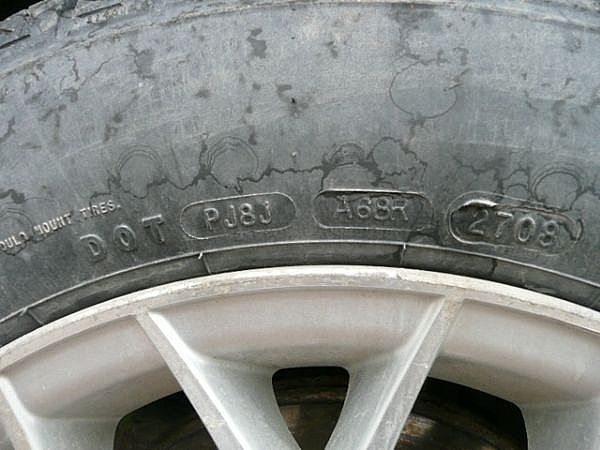 If the combined wheel and tire diameter aren’t correctly matched, there may be drastic differences in ride height and speedometer readings.
If the combined wheel and tire diameter aren’t correctly matched, there may be drastic differences in ride height and speedometer readings.
For example, fitting 17-inch-diameter wheels to a car that is designed to have 14-inch-diameter wheels will change the ride height. That means the car body will be higher off the ground. There will also be a slight increase in top speed, and the speedometer will no longer be accurate. Last but not least, the car will accelerate slower.
Switching to different tire sizes can only be done in compliance with all legal requirements and regulations – plus the recommendations of the vehicle, wheel, and tire manufacturers. At the very least, the wheel must have complete freedom of circular motion and the tire’s adequate load capacity must be observed.
The internal construction of tires fitted on any vehicle must either be radial or bias-ply. Fitting mixed tire constructions (bias-ply and radial together) for cars, caravans, and other light trucks is unsafe and illegal.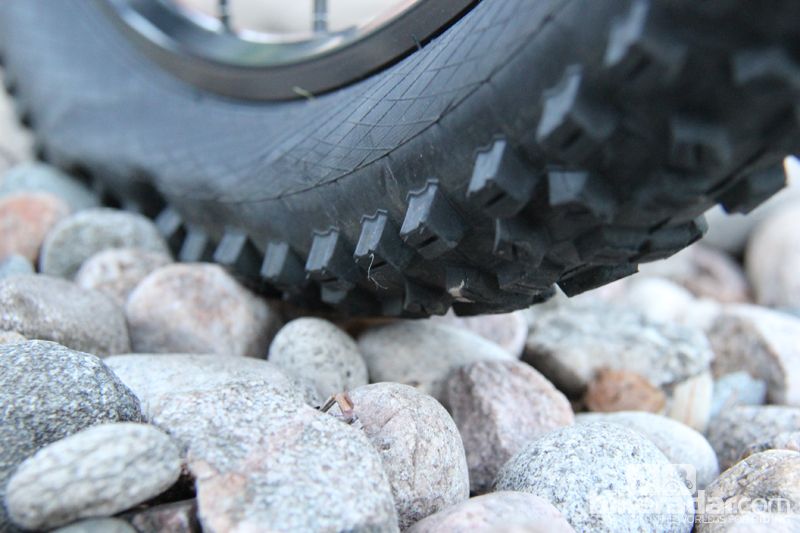 The only permissible exception is the use of a spare tire for an emergency.
The only permissible exception is the use of a spare tire for an emergency.
Concerning the choice of wheels or rims, the same guidelines apply. Motorists must use the standard wheels or rims approved by the vehicle manufacturer as recommended.
For optimal safety and performance, replace all four tires at the same time. While it is possible to switch out less than four tires at the same time, you should follow a couple of guidelines regarding tire size.
If only replacing one or two tires, for example, ensure that each one is the same size and has the same load index and speed rating as specified by the car manufacturer.
When replacing only two tires, fit both of them to the wheels on the rear axle. The reason for this is that the newer tires will have much better grip, particularly on wet roads, and reduce the risks of hydroplaning.
Replacing only a single tire is not advisable, as it can impact vehicle suspension or transmission and produce excessive wear on the tire tread.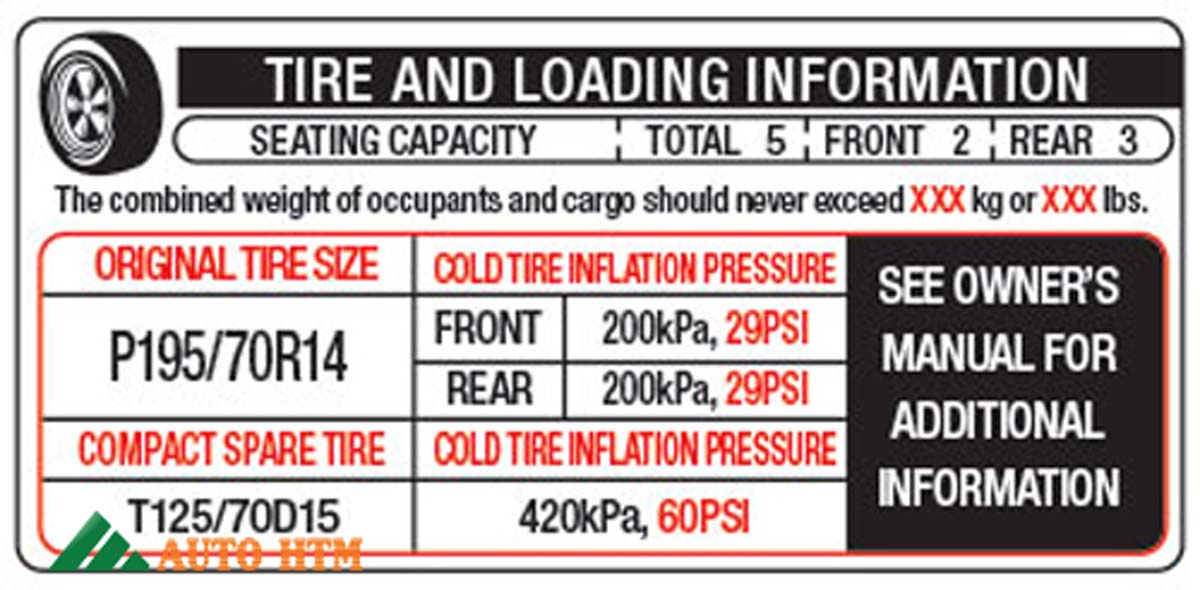 But if replacing only one tire is unavoidable, then pair the single replacement tire with the tire that has the deepest tread depth, then fit both to the rear axle.
But if replacing only one tire is unavoidable, then pair the single replacement tire with the tire that has the deepest tread depth, then fit both to the rear axle.
The fastest way to the perfect tire.
Select tiresize or Show results
So, you are planning to replace car tires - no matter for what reason, maybe the old tires are out of order or you are thinking of changing the appearance of your car - the first thing you will need to decide is to decide what size car tires are needed specifically for your vehicle. Only after that you will be able to choose a suitable tire model in the online store. Understanding the marking of rubber is not as difficult as it seems - just read the information in this article.
The vehicle type for which each tire is designed is indicated by numbers or letters on the tire.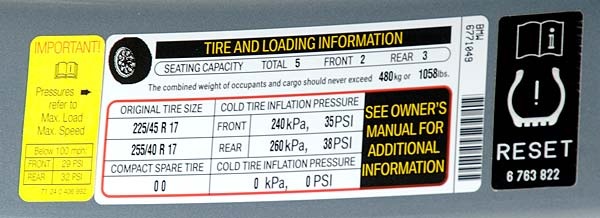 Typical tire operating conditions can be seen here.
Typical tire operating conditions can be seen here.
Let's consider an example - size P 225/45R17 91S.
The letter "P" used on car tires indicates that the product is intended for passenger cars and is present in the P-metric system, which began to be used more than 40 years ago and is still in use today. Passenger cars include passenger cars, minivans, pickup trucks and light (parquet) SUVs. The carrying capacity of vehicles for which tires with the P mark are intended should be in the range from 250 to 500 kg per 1 wheel.
If the rubber marking does not start with a letter and three numbers, this means that this tire is made according to a different dimensional system - Euro-metric, which is common in European countries and applies to car tires for passenger cars, vans and light SUVs. The size range in the P-metric and Euro-metric systems is almost identical, the differences exist only in the ultimate load.
Consider another example - T125/90D16 98M.
Tire markings beginning with the letter T indicate that the tire is a spare tire and can only be used during tire fitting work on the main tire.
If the tire marking begins with the letter designation LT, this indicates that the product belongs to the Light Truck-metric size system, which is used to designate the size range of automotive rubber installed on large vehicles, pickups, vans, powerful SUVs with a load capacity of 750 up to 1000 kg.
If the marking of a car tire ends with the letter LT, this means that the tire belongs to one of three marking systems - flotation (Flotation), numerical (Numeric) or wide base (Wide Base). These systems apply to tire sizes for heavy trucks and trailers. For such vehicles, rim diameters start at 16.5 inches, with the help of a large tire, the car easily copes with the most difficult and difficult trails. In this category, you can pick up tires for cars weighing from 500 to 1000 kg.
In the Euro-metric system, the letter designation may come after the number, for example, the letter C in this example is /70R15C 104/102R. This means that this rubber is intended for use on commercial vehicles - trucks, trucks or vans.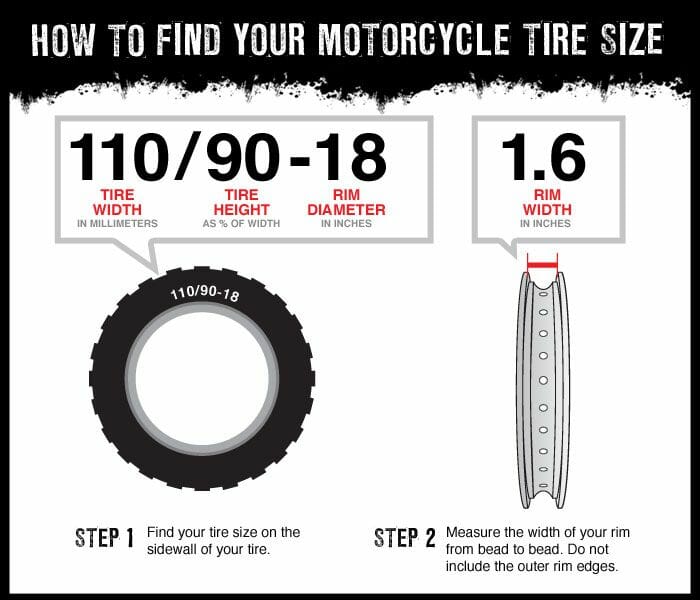 In addition to marking C, the letter designation B or D may be allowed, which also corresponds to a certain load range.
In addition to marking C, the letter designation B or D may be allowed, which also corresponds to a certain load range.
A tire label that begins with the letter ST, eg ST225/75R15, indicates that the tire is intended for general or special purpose vehicle trailers. Tires with this marking are not permitted on cars, trucks, vans and pickup trucks.
To more accurately determine the choice of tire sizes and the most suitable modification of rubber for your car, a specialist from our company GOOD WHEELS can always help you - just make a call to the indicated numbers or leave a request on the website - you will be given a detailed consultation on the model and size range. We recommend that you have at least basic knowledge in this area - this knowledge will always be useful to you and you can learn it by asking a consultant of our tire center.
Everything is much simpler here than with letter designations.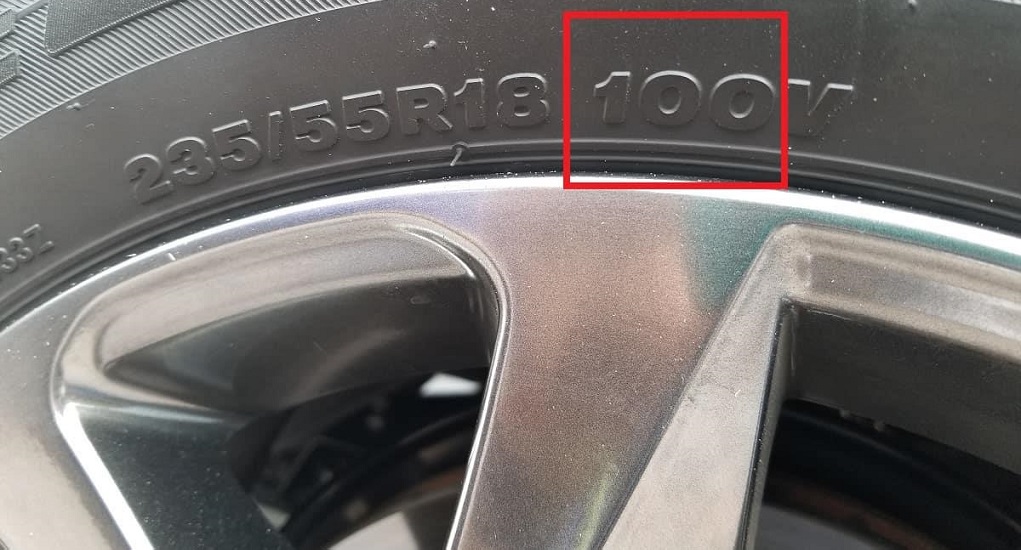 The three-digit number after the letter indicates the size of the tire width in millimeters. For example - 225/45R17 91S. Here the number 225 is the width of the tire from outside to inside when measured directly on the wheel after installation.
The three-digit number after the letter indicates the size of the tire width in millimeters. For example - 225/45R17 91S. Here the number 225 is the width of the tire from outside to inside when measured directly on the wheel after installation.
The next two digits indicate the numerical value of the ratio of the height of the tire to the width of the profile. For example, in this case - 225/45R17 91S figure 45 means that the height of the tire is 45 percent of the profile width. Height is measured from the outer edge of the wheel to the seat rim. That is, the higher the number, the larger the sidewall of the tire. If we know that the tire width is 225 millimeters, and the digital value is 45, then this means that the profile height is 101.25 mm. In another example - 225 / 70R16 - the ratio is slightly different, with a width of 225 mm, the height is 70 percent, that is, 157.5 mm.
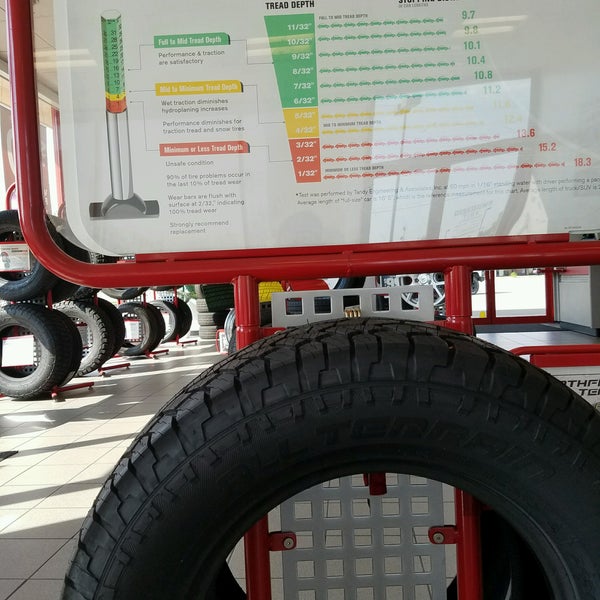
In this example - 225 / 45R17 - the letter R indicates that the cords in the carcass are located radially, that is, the tire has a radial design. The radial type of tires is the most common and sold. More than 98 percent of all produced and sold car tires are of radial design.
Tires designed for light duty vehicles will use the letter D instead of the letter R. This tire will have a diagonal carcass type.
Tires marked B are practically non-existent and rarely produced - these are tires with a diagonal carcass and tread reinforcement with special belts. This design is called Belted and is a rarity in car shops and tire centers.
The letter Z can be added to the letter designation R - as in this example 225/45ZR17. Now it is rare to find tires with such a designation, but nevertheless, the speed index is displayed in this way - Z-speed rated.
The speed index can only appear after the numbers indicating the percentage of height to width ratio and after the letter R, indicating the type of internal tire construction - but this is rarely used, since 1991 the speed index marking has been indicated in the service description.
After the letter R (D or B), manufacturers indicate a number that indicates which rim diameter this tire fits. For example, in the marking P225 / 45R17 91S number 17 means that this rubber is intended for a disk with a diameter of 17 inches.
The numerical designation can be from 8 to 28 - what number, this should be the size of the disk to install this particular tire on it. Common designations are 8, 10, 12, 13, 14, 15, 17, 18, 19, 20, 23, 24, 26, 28. This size range allows you to choose tires for cars and trucks, minivans, vans, SUVs.
Less common but still used sizes are 14.5, 15.5, 17.5 and 19,5. These dimensions are suitable for heavy-duty trucks and covered vans.
Sometimes the size markings are given in millimeters, for example - 190/65R390. Such a system is called millimetric. Michelin uses this system for the TRX range.
Michelin also uses its own original integrated tire labeling system called the Michelin PAX.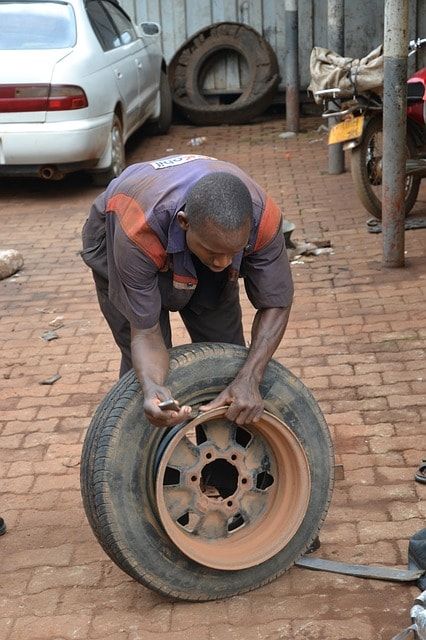 Under this system, tire dimensions and rim dimensions are indicated in millimeters. For example - 235 / 710R460A 104T, here 235 is the size of the profile width in millimeters, 710 is the outer diameter of the tire in millimeters, 460A is the rim diameter, the letter designation A means that the tire has asymmetric beads, with different diameter sizes.
Under this system, tire dimensions and rim dimensions are indicated in millimeters. For example - 235 / 710R460A 104T, here 235 is the size of the profile width in millimeters, 710 is the outer diameter of the tire in millimeters, 460A is the rim diameter, the letter designation A means that the tire has asymmetric beads, with different diameter sizes.
Understanding the nuances of the manufacturer's label when purchasing new car tires, especially if these are ultra-modern tires created using the latest innovative technologies, can take forever. It will be even more difficult for an autolady to cope with the choice of rubber on their own than for a male driver. Perhaps you should not waste your time on this - after all, the specialists of the GOOD WHEELS online hypermarket are always ready to help you in choosing high-quality car tires!
It's no secret that the driving characteristics of the car depend on the quality of adhesion of the wheels to the road surface.
Since tires directly affect the handling, maneuverability and safety of the vehicle, it is extremely important to choose them correctly. It is necessary to consider the wheels as a single element of the car, consisting of a tire and a disk, since it is in this set that they are installed on the hub.
On a vehicle of any class, it is necessary to install wheels with the appropriate parameters. Auto manufacturers allow the installation of wheels with tires that match the standard size. It is also allowed to use wheels with a diameter size that does not exceed the standard parameters by more than two inches for passenger cars. As for the disks, the car disk, for example, of a crossover should not differ from the standard one by more than three inches.
Having dealt with the diameter of the tire, owners are faced with the choice of width, profile height, speed index and tire load. Let's take a closer look at each item worth paying attention to.
The situation in which a disk is selected for an existing tire is not common. As a rule, this occurs due to premature damage to the disc due to deformation of the rim when hitting an obstacle or when the tire does not fit tightly to the walls.
But let's take a closer look at the classic case when we match tires to rims. So, what should we pay attention to first of all when choosing tires for size 17 wheels? That's right, for labeling:
 The width of the rim must match the width of the tires.
The width of the rim must match the width of the tires. To understand which disc will be best suited, the diameter of the wheel will help. It plays an important role in the selection, affects the quality of the connection between the tire and the rim in the seat. The parameter, which varies from 13 to 22 inches, in the disk indicates the outer diameter, in rubber - the diameter of the mounting hole.
Before assembling a wheel that will fit a particular brand of car, let's take a closer look at the European marking designation system.
Standard parameters 225/45 R17 91 T are read as follows:
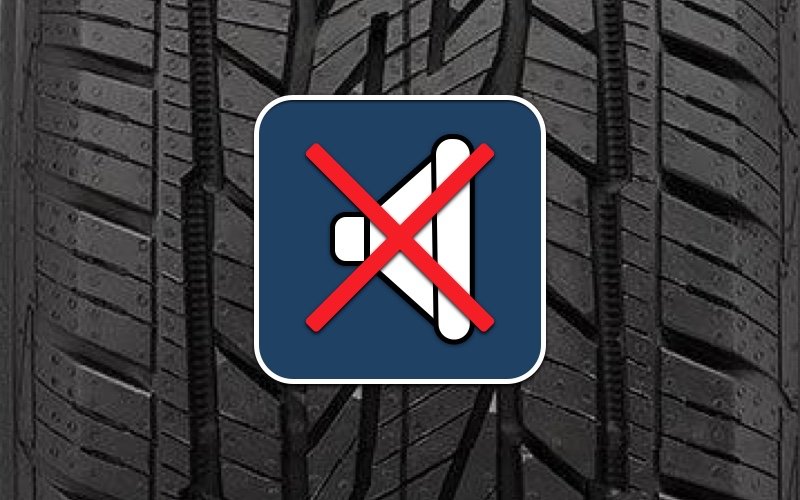
The size of the rim must match the corresponding tire size or be slightly smaller. In the case of installing tires with an increased profile on the vehicle, it is also necessary to increase the width of the rim. The width of the 225mm tire as an example above suggests that the wheel will be fitted with a 7.5" or 8" rim. You can study which parameters are suitable for a different size in the tables of automakers.
Official representatives of major manufacturers supply car tires with one profile for several rims at once. They take into account borderline indicators, which are better not to pay attention to. Such models will not be optimally sized, which can lead to disassembly of the wheel under severe side loads or deformation of the tire when it is strongly stretched. What is the best option in this situation? – the optimal solution will be a rim with an average value.
When assembling the wheels, the profile of 17 tires should also be suitable.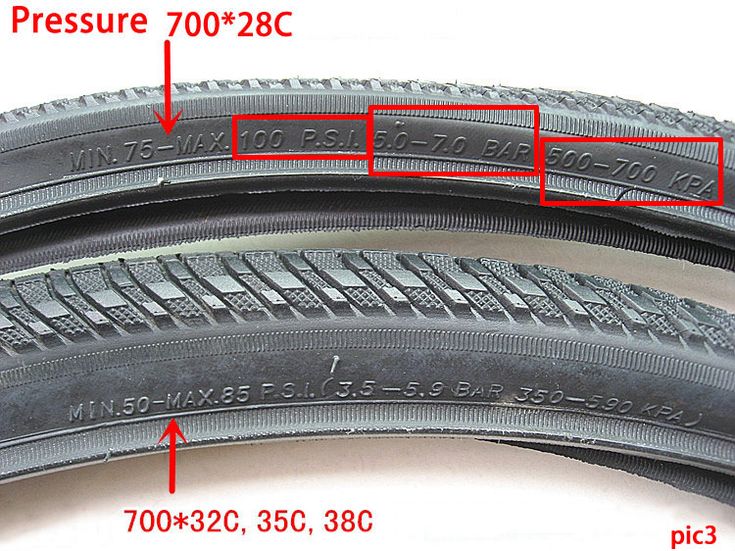 This parameter, denoted by the letter H, displays the percentage of the height of the side of the rubber to the width. If the values are not met, this will not affect the assembly and balancing of the wheel in any way, however, it will be difficult to put such a disk in the car arch. If you choose a larger size, the rubber will touch the arches and suspension elements.
This parameter, denoted by the letter H, displays the percentage of the height of the side of the rubber to the width. If the values are not met, this will not affect the assembly and balancing of the wheel in any way, however, it will be difficult to put such a disk in the car arch. If you choose a larger size, the rubber will touch the arches and suspension elements.
In order not to choose on your own what profile height is suitable for the car, it is much easier to control this parameter by increasing or decreasing the wheel diameter. If the wheel diameter is increased, then the profile of the rubber decreases proportionally. This is done so that large rims with low profile tires fit into small arches.
Summer Drive Protection Sound Comfort
Rating:
4.5
Tires Goodyear Eagle F1 Asymmetric 3 SUV
Summer Drive protection
Rating:
4. 5
5
Tires Goodyear Eagle Sport TZ
Summer Drive Protection Run On Flat
Rating:
4.5
Tires Goodyear EfficientGrip Performance
Winter Drive Protection
Tires Goodyear UltraGrip Arctic 2 SUV
Winter Drive Protection Sound Comfort
Rating:
4.5
Tires Goodyear UltraGrip Ice 2
Winter Drive Protection Sound Comfort
Rating:
4. 5
5
Tires Goodyear UltraGrip Ice SUV
Winter Drive protection
Tires Goodyear UltraGrip Arctic 2
Summer Drive Protection
Rating:
5
Tires Goodyear Eagle Sport SUV TZ
Summer Drive Protection
Rating:
4.5
Tires Goodyear EfficientGrip SUV
Not every car owner will be able to independently choose the right set of wheels for the car. Comparing models only in terms of parameters is often not enough to put a new kit on a car. Even choosing a model that should fit in size, you may encounter a problem in which the wheel cannot be put on the hub.
Comparing models only in terms of parameters is often not enough to put a new kit on a car. Even choosing a model that should fit in size, you may encounter a problem in which the wheel cannot be put on the hub.
When choosing a set of tires, car owners do not always pay attention to one more indicator - ET, rim and rubber offset from the wheel arch. The parameter is considered in millimeters from the attachment point to the hub to the outer side of the wheel. If you put too wide a rim that does not fit the car, this leads to excessive tire wear, as well as damage to the paintwork, since sand and dirt from under the wheels do not collect in the arch, but flies onto the car's fenders.
If you put a rim with tires that do not meet the recommendations of automakers, problems will begin to appear during operation. What will be the price of an error depends on the selected tire size. Too narrow models can be disassembled while driving, which can lead to an emergency. Too wide - will interfere with the natural operation of the power units of the suspension.